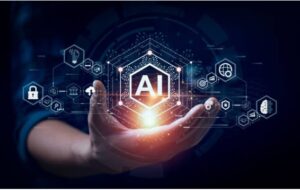
1. Introduction: Education Meets Innovation
There is no exception to education in the revolution of the digital age. Because technology takes its normal course, these models gradually change the traditional ways of teaching with the objective of preparing the students with those skills which will propel them in the digital era then.
That’s not about getting tablets and smartboards into classrooms it’s about altering how we teach, how we learn and how we measure whether we know it or not. These days, it is critical thinking and adaptability that get the spotlight. The combination of technology and education is challenging as well as the enabler of questions around equity, access and defined roles for educators and ( educational ) students.
2. Digital Literacy: A Core Competence

Digital literacy today is as important as the traditional literacy and numeracy. Internet safely, critically and efficiently with digital tools is something that the students are expected to learn how to do. These are not the same as turning your computer on, they’re learning coding and cybersecurity, some form of AI and blockchain.
All it takes is the following: including digital literacy in curricula so that students will be ready to live with a digital world which makes up the majority of career, communication, means to personal growth.
3. Personalized Learning with Learning Technology
But technology in education has changed everything about one of its most powerful impacts ever: personalized learning experiences. Artificial intelligent backed tools study students’ strengths and weaknesses and continue to explore the same content’s pace and content.
This kind of tools of learning gives the students to progress very fast and at the same time no student will ever miss. As a way of growing education, these platform are also built to meet the learning styles of students auditory, or visual, or kinesthetic.
4. Online Education: Expanding Access
There has not put geographical boundaries as to how to get quality education through which has opened up unprecedented opportunity for getting quality education. You can learn from the best of the world’s instructors, free of charge, from your house, on platforms such as Khan Academy and Coursera, full blown degree programs of course.
It is also self disciplined work of online education and needs to be supremely managed. One hand democratizes learning while another hand exposes the digital divide meaning not everyone has an opportunity to have a device and a high distance connection.
5. Preparing for Future Jobs

For what will be the jobs of tomorrow, automation and machine learning and AI will drive them all. That is just the beginning: preparation doesn’t end when you are teaching them to solve problems, be creative and emotionally intelligent.
As schools and universities broaden their offering in education to the arts and humanities and produce more STEM graduates, they are making sure schools are training people who can change jobs if that’s what they want.
6. Teachers Role in Digital Era
The fears that technology would eliminate teachers are really just urban legend, as technology is actually making teachers’ roles even more important. Teachers are changing from simple transmitter of information to facilitator of learning and by living in real world.
They know how to use digital tools to the best of our ability and to learn and think critically with each other. The digital education can’t provide the most benefits if the educators who are trained on the process of professional development are not taught the latest technologies.
7. Technology in education: challenges
Technology is good and bad. Third concern: Cyberbullying and misinformation spreading, Digital addiction. However, technology can distract from personal skills, especially those that need to be reviewed solely through technology — including interpersonal and critical thinking.
‘The challenge has to be addressed at schools where solid policies are put up, digital citizenship education is promoted, and the right relationship with the technology is developed.’
8. Bridging the Digital Divide

Ideally, an academic technological advance would solve the digital divide problem, but this is still an urgent issue. Say for example that students from those backgrounds might not have the equipment or consistent internet.
To achieve equitable access to technology it’s important for governments, non profits and private organizations to work together. It means subsidized devices, building infrastructure in remote areas and running free digital literacy programs.
9. The Role of Gamification
A research has demonstrated the effectiveness of gamification in education through various game like elements game (leader adoption, badge and levels) to increase engagement and motivation of students. Platforms that use gamification, like Duolingo or Prodigy, do it by making the learning fun and interactive. This will lead to classifying problem solving and persistence integration while game based learning in the classroom, where complex topics will be more approachable and fun.
10. Technological Ethics in Education
The more technology is involved in an education, the less reason should there be for not considering an ethical aspect. The regulation of and supervision over relevant data privacy issues, surveillance strengthening and risks for misuse of AI need to be conducted carefully.
Thus, schools and policy makers want to facilitate clear framework and set the right conditions as a child’s guardians and set the technology to the benefit of children by ensuring the rights and the well being of the children and encourage innovation.
11. Classroom Learning the Future
The classroom of tomorrow will be a hybrid of physical and virtual space while bringing the best of everything. Virtual reality (VR) and augmented reality (AR) will allow the students to learn through them, and equipment will be used to have them participate in virtual trips to the field or to simulate the situation in the real world.
Working together in real time with other students globally using collaborative tools will foster global citizenship. With technology, the classroom will continue to change: become more inclusive, interactive, effective.
12. Conclusion: Shaping a Better Tomorrow
Education in this digital age is a metaphor for the transformation of education leaders working with educators, students, policy makers and technology providers. It’s difficult, but like any project, there are a vast amount of things to add to and improve in.
Instead though, our investment in our students will be to learn to learn and adapt every day of their lives, not to work for a future world but to live in it. In the digital age knowledge is simply not enough, you need wisdom, technical skills, an ethical disposition and the skill to broker a more and more fluid world.







